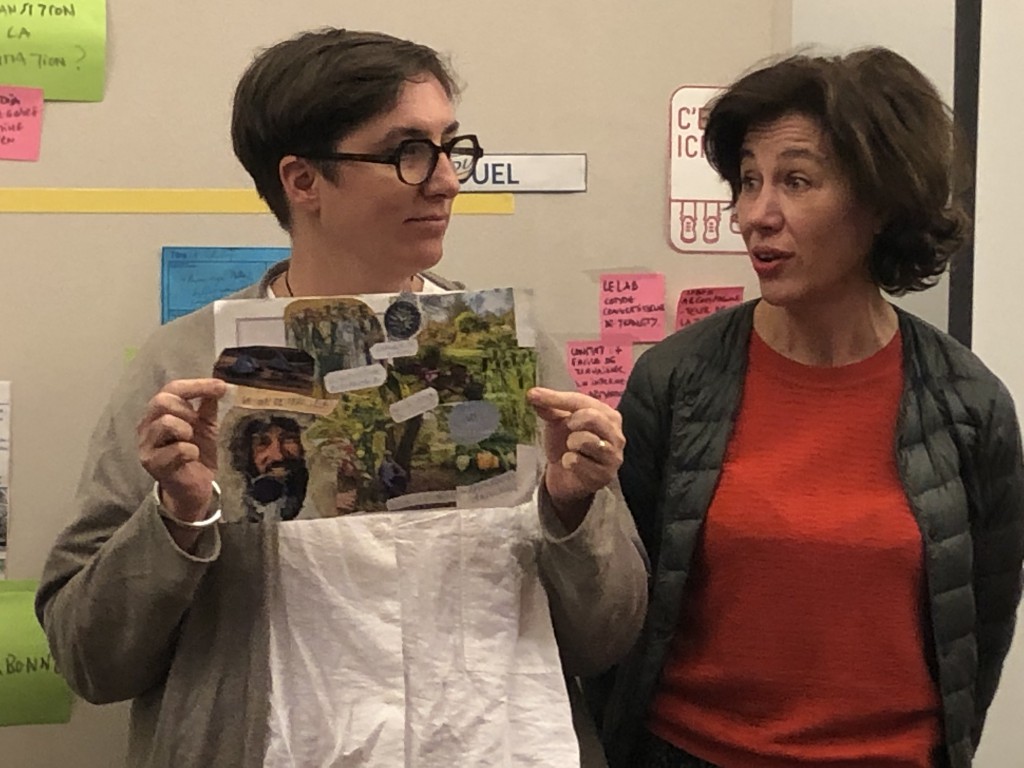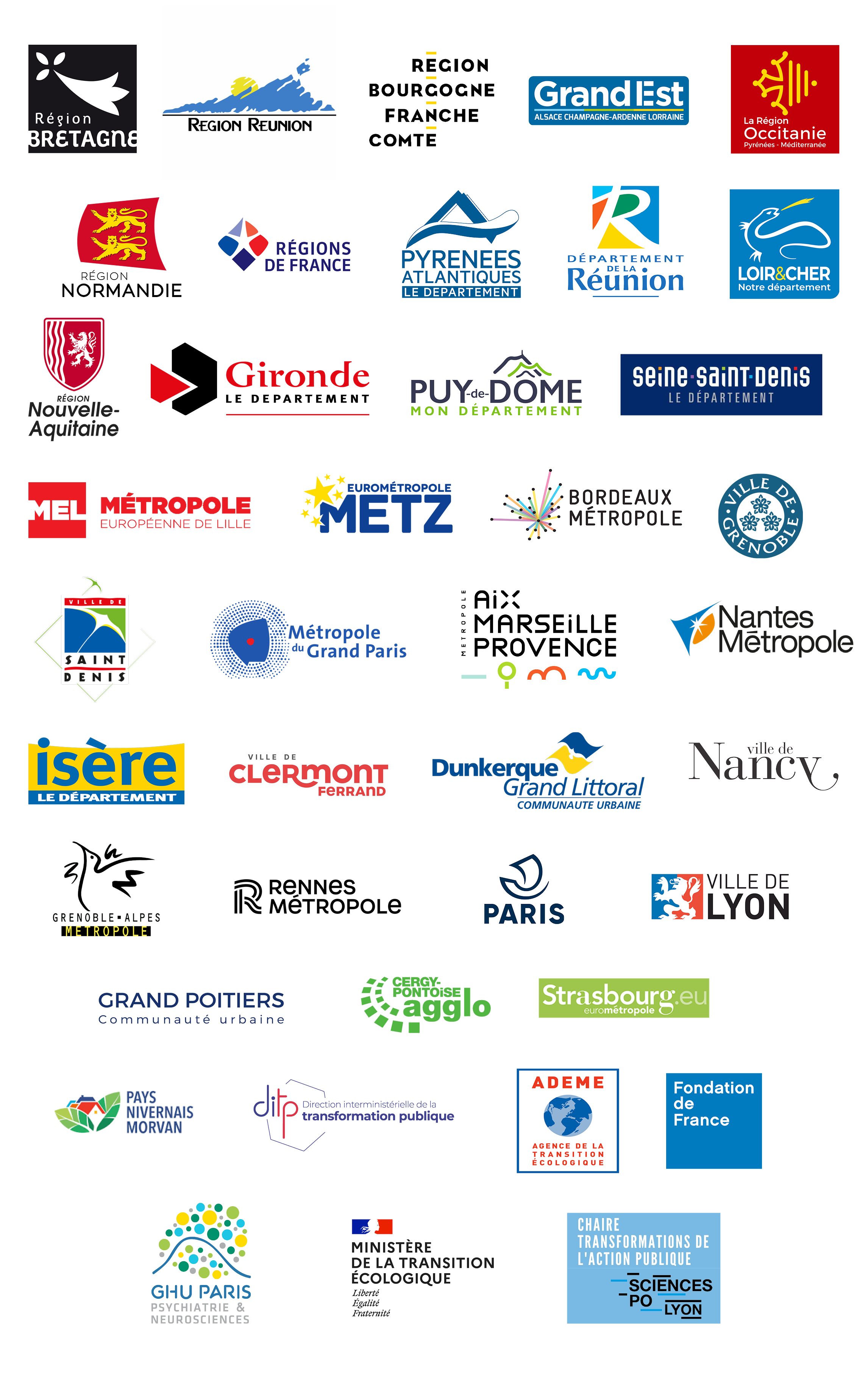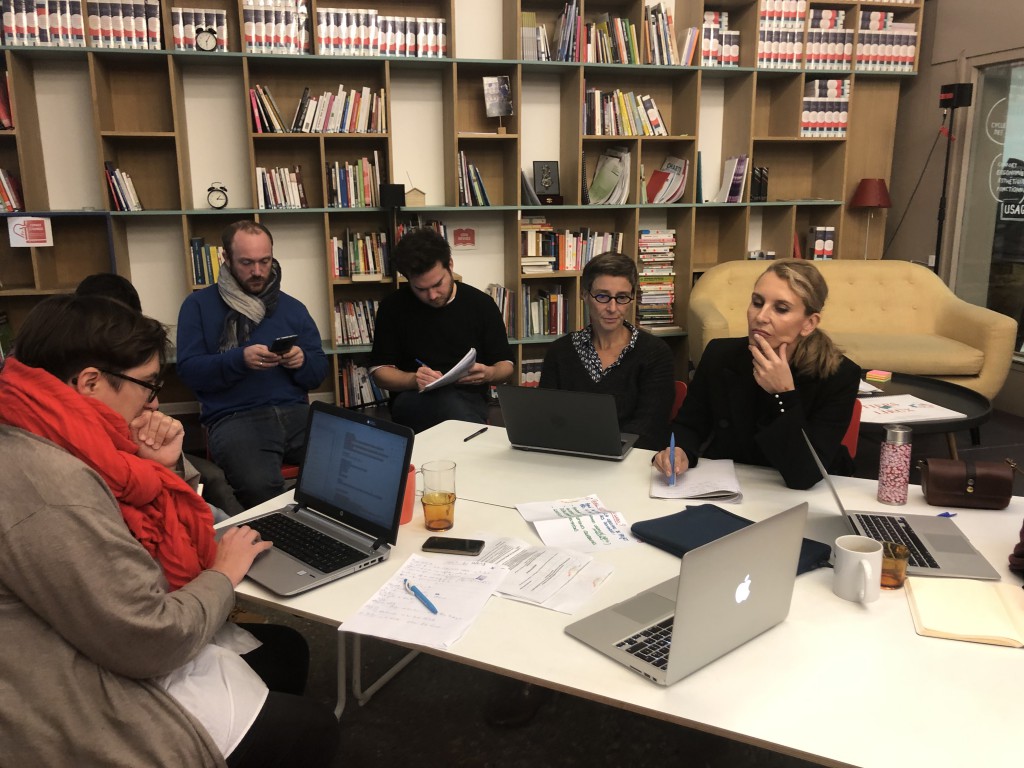
Public transformation and transition(s) : what is the role for innovation labs ?
In a context of multifaceted crisis (ecological, social, democratic), initiatives linked with the concept of transition are multiplying, on different scales of territories, led by a myriad of stakeholders. Becoming a “territory in transition” seems to be a necessary and desirable effort for many local governments: yet if it seems associated with positive values (as opposed to a rigid, not very reactive and not very resilient world characterized by our old public or private institutions), the concept of transition may also seem vague, “catch-all” or even ineffective, and with disparate strategies. In fact, what are we transitioning to ? And how ? Who is legitimate to do so? Does public stakeholders have a say in this?
On Tuesday, November 12, public agents engaged in the Post-Transfo program led by La 27e Région met for a day of work and familiarization with this multifaceted concept. The Post-Transfo programme aims to involve a collective of public innovation laboratories in a collective reflection during the year 2019-2020 on key topics for labs – such as the political support for public transformation, the empowerment of agents, or methods for evaluating projects – or more forward-looking subjects – such as the question of new narratives, indicators or… transition.
Why engaging a conversation on “transition” with public innovation labs? First of all because there seems to be an obvious link between the territorial dynamics of transition, which often follow a “bottom-up” logic and are carried by civil society or other social and solidar stakeholders and the internal transformation of administrations. In order for communities to be able to support transition initiatives, to understand the ecosystems of actors, and to think public policy policies accordingly, they must necessarily change their processes and their internal organization. And it is precisely at this pivotal point that the public innovation laboratories are located.
So there were 25 of us, from more than fifteen local governments or public administrations gathered at Superpublic that day to dissect the concept of transition from all angles, and try to define the strategic roles of public innovation labs in terms of support for territorial transition.
A first round of discussion made it possible to share existing initiatives, carried by collective labs, and classified according to a test pattern highlighting two lines of tension: firstly the inscription of the transition “in continuity” or “At odds” with the existing dynamic – and secondly, its impact on a territorial and individual level (behavior, personal choice, lifestyle) or institutional and infrastructural. This first harvest, coupled with a series of telephone interviews with pioneering players in the field, allowed us to identify several problematic nodes.
- First, territorial scale seems important to question. Transition dynamics have the specificity of being multi-actor and multi-scale. At the local level, they seem to be based on a variety of social, civic, associative or entrepreneurial initiatives, which therefore find themselves in connection with administrations and ultra-local political representatives. However, public innovation labs are rather located in large communities (cities, regions, departments) with sufficient financial and human resources to invest in innovation. It is therefore important to ask what labs in large local governments may bring to ultra-local transition initiatives:… piloting assistance, at the risk of not being close enough to the field? … Financing, with all the complexity of inter-institutional budget lines? … a methodological resource center, at the risk that the expertise is reversed? … scaling engineering? … Networking with other initiatives and actors on the territory or beyond?
- Second, transition requires a structurally transversal approach (which can intersect a variety of subjects such as energy sobriety, food self-sufficiency or the relocation of production). It also challenges existing categories in public policies. In this sense, it brings similar problems as public innovation does: when delegated to a dedicated body (a specific service, mission or lab), the risk is to be unable to impact all the local government practice in a whole. Placed at a strategic level, the risk, on the opposite, is to be disconnected from operational realities. There is therefore a real challenge, which can be seized by the labs, to formulate systemic visions of transition, which speak both to stakeholders on the field and to policy makers.
As an inspiring example: the transition model experienced by the city of Loos en Gohelle is based in particular on new forms of co-production of the general interest with citizens and on enhancement of citizen participation dynamics. Within the administration (a hundred agents. 10 project managers), this translates for example into a permanent search for transversality; there is therefore no project manager dedicated to ‘citizen involvement”, but this dimension is integrated into each department. It is a question of developing the relations of the administration with local stakeholders and inhabitants of the territory towards new forms of cooperation in all fields of public policy. In this sense, the subjective part, the personal experience of each one and in particular of the agents, are taken into account as drivers, alongside professional practice. Julian Perdrigeat stresses however that such evolutions must be accompanied, on the managerial level, by paying attention to questions of balance and health at work, attention also not to discredit managers, etc.
If transition involves multi-actor governance, it must also be based on skills and expertise that are rarely embeded in local government. Thus, change management, managerial transformation and the use of data (big or not) seem essential entry points for conducting transition policies, from the administration’s point of view. In the field of civil society, behavioral sciences, shared governance and popular education (sometimes community organizing) are frequently sought. It therefore seems clear that to support local transition dynamics, labs shall support local government to integrate new analytical grids and new skills internally, but also to build bridges between these various approaches.
As an inspiring example: the CLER network (french network for energy transition at the national level) coordinates territorial approaches based on both an ecosystem of stakeholders (local communities, popular education or mediation associations, ressource centers, etc.…) and action frameworks accessible to individuals (such as « Positive Energy Families » competition). According to them, structuring stakeholders must go hand in hand with the commitment of citizens.
Finally, designing a transition project from the point of view of public administrations raises questions of values and political orientation. In a time when social justice and ecological challenges are sometimes seen as in opposition, where the public actor struggles to remain guarant of the general interest in collective representation, how to formulate the “values” of the transition? The risk of a political instrumentalization of this concept – particularly during an electoral period – is very real. Could the labs be used as a compass to help elected officials understand the multiple discourses and representations of this notion ?
* In the end, there is the question of measuring transition: unlike traditional territorial development (which is measured by the economy or the number of jobs), the transition calls for new indicators, based on the well -being, quality of life felt by the inhabitants or broader concepts such as social justice or territorial equity, without forgetting the capacity to preserve resources (natural, for example).
As an inspiring example: the metropolis of Grenoble has been testing new indicators of well-being for inhabitants, based on a network of public and parapublic observatories.

To extend this cross-cutting work of problematization and unraveling of inspiring initiatives, the participants then divided into groups to approach the transition from a prospective and creative angle: we started by describing a world where transition took place ( whether in the field of food, the prevention of climate risks, or mobility). We then built step by step, the process to get there, by questioning in particular the role of public administration. In the process, the local governments identified several scenarios to qualify the role of the labs in supporting local transitions.
- * The “transitions translator” lab converts the topics and initiatives carried out by local stakeholders into internal transformation opportunities for administrations. Above all, this lab allows the administration to keep up with social innovations! It can also be a force for proposals on new models of support for the transition (funding, knowledge of the ecosystem, legal framework).* The “transitions incubator” lab promotes transition strategies at the political level, creates a mobilizing narrative, and serves as a resource center for stakeholders locally… It aims to produce “public transition policies” – transversal, cooperative, agile – as opposed to what would be top down “management of the transition”. This lab aims to invent a new kind of public / society partnership that is better able to face contemporary challenges.* The “transition activator” lab allows the administration to itself build its own transition, to seek exemplary value and innovation internally. Indeed, the administration won’t be legitimate to think about transitions of the territory if it does not apply to itself these recommendations. This lab would particularly target large local governments, “first of the class” in public innovation, but often less of a model in terms of food policy and public agents mobility, work and places management, or even energy sobriety.* The “transition detector” lab allows its administration to draw inspiration from models or examples outside (abroad, or in other sectors of society). It aims to increase the general competence of public agents.es and of the executive power. It builds on existing networks, helps to build vocabulary, demystify subjects, create capacity for analysis and action.
* The « inter-territorial or archipelago » lab which links the various scales of action, supporting complementarity between public institutions of various sizes and plays an intermediary role between stakeholders – civil society, businesses, public sphere , etc.
These various approaches are of course combinable and superposable.
At the end of this day, paths emerge to go further. First of all by sharing references and sources of inspiration: in the coming months the inter-institutional lab brought together between the city and the Grenoble metro with the social center and the department of Isère, will launch an exploratory approach around behavioral changes in the city. The urban community of Dunkirk, <ith a new ambitious project around the industrial renewal of the region, is leading a project around social innovations in waste management. Finally, Rennes Métropole and the Brittany Region, via the TiLab, are continuing their reflection to build a shared understanding and common inter-institutional challenges linked to transitions in Brittany. Finally, the 27th Region’s Enacting The Commons program allows us to question the influence of common projects (many of which have transition objectives) on public management in different European cities. This sharing of initiatives, readings and analytical tools allows us to continue to decipher what is playing out behind the concept of transition.




